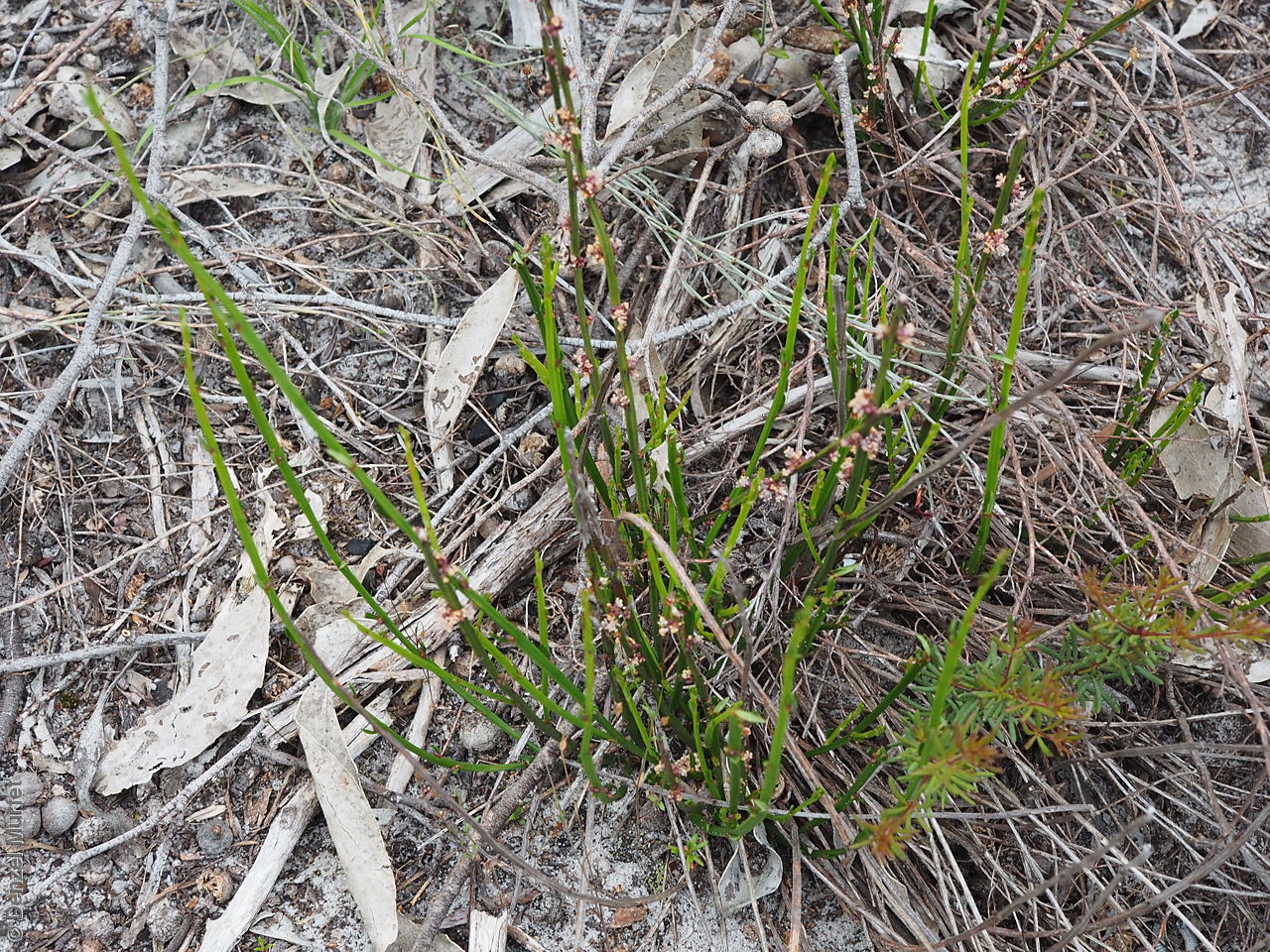
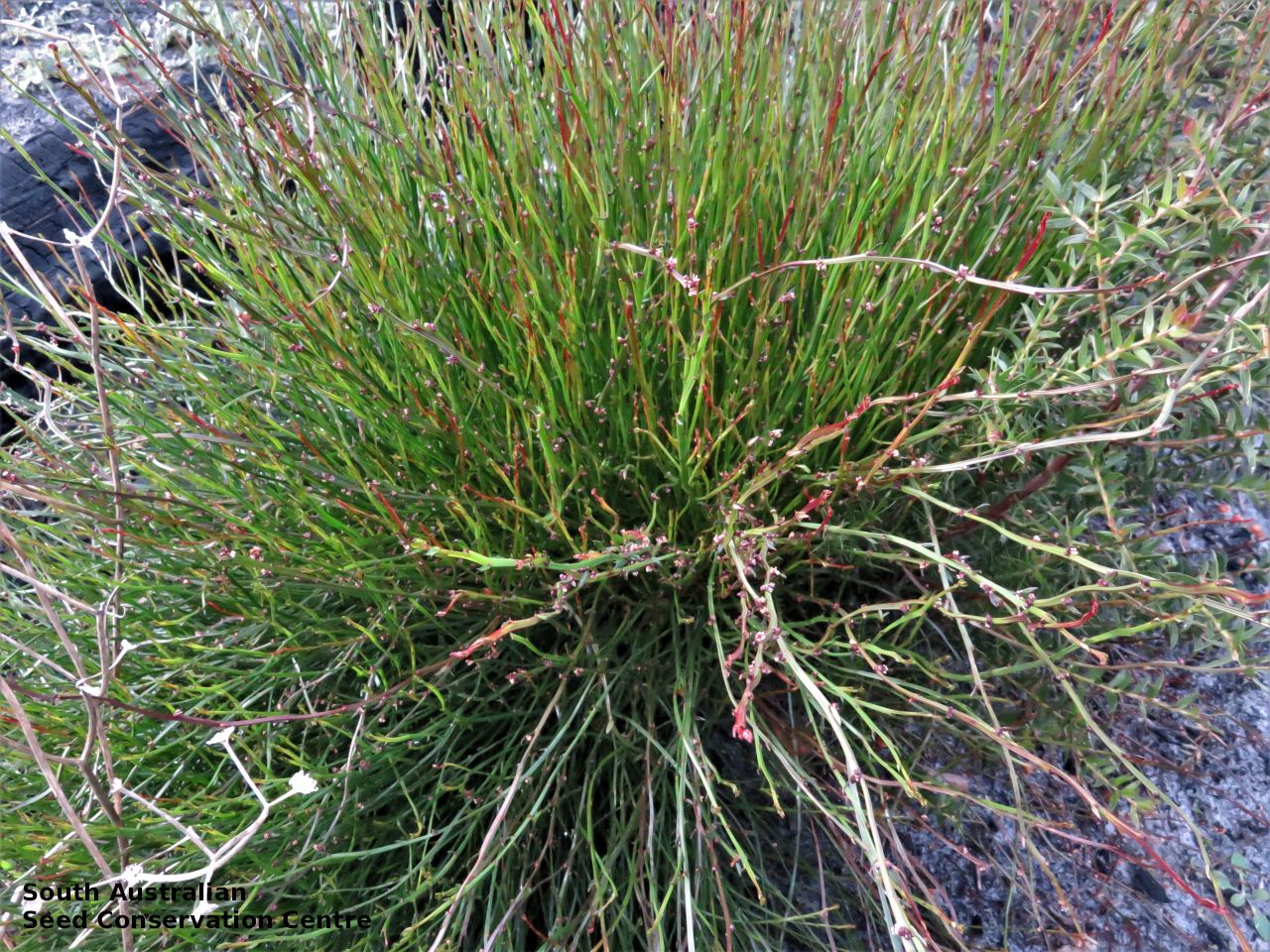
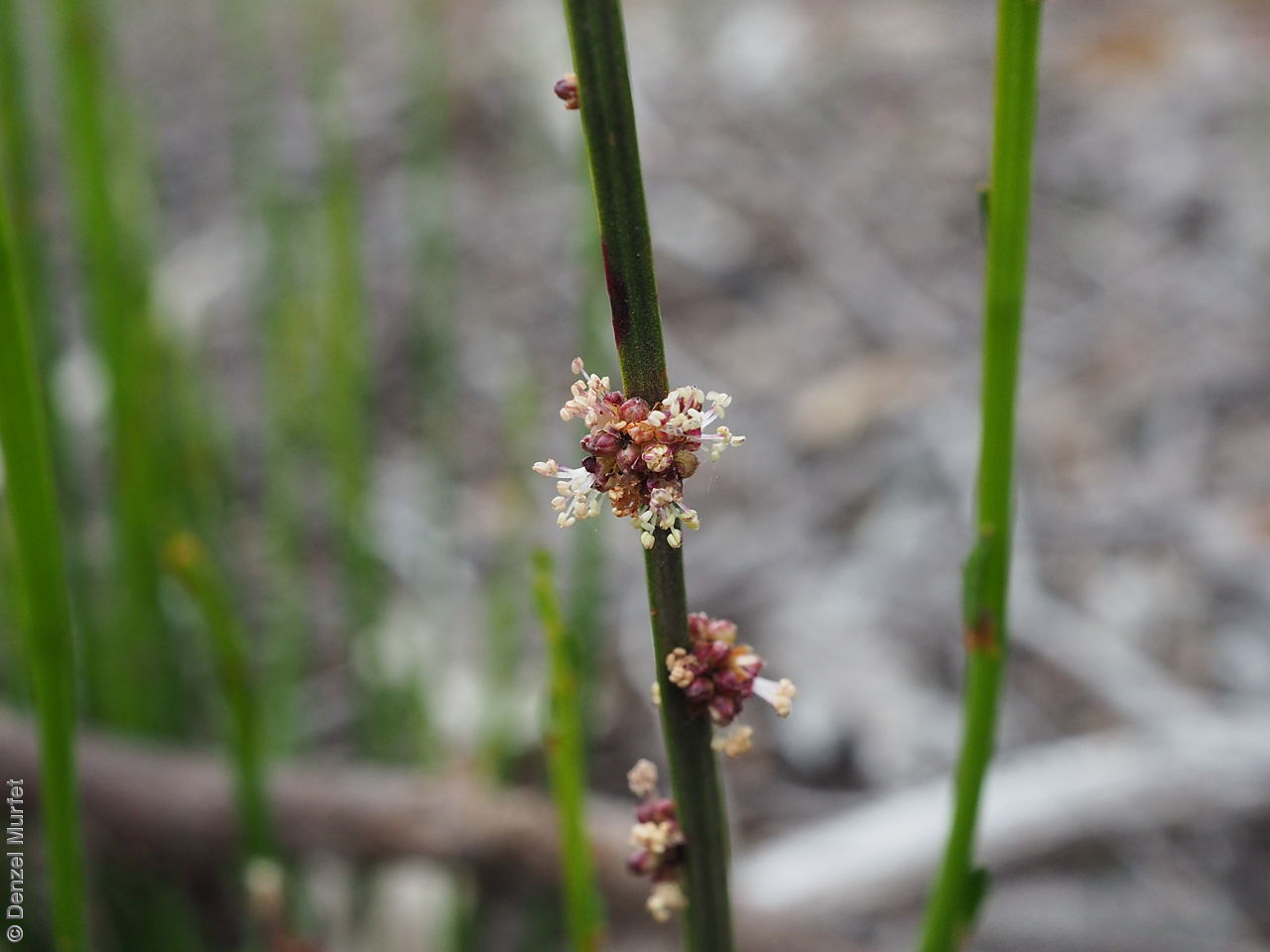
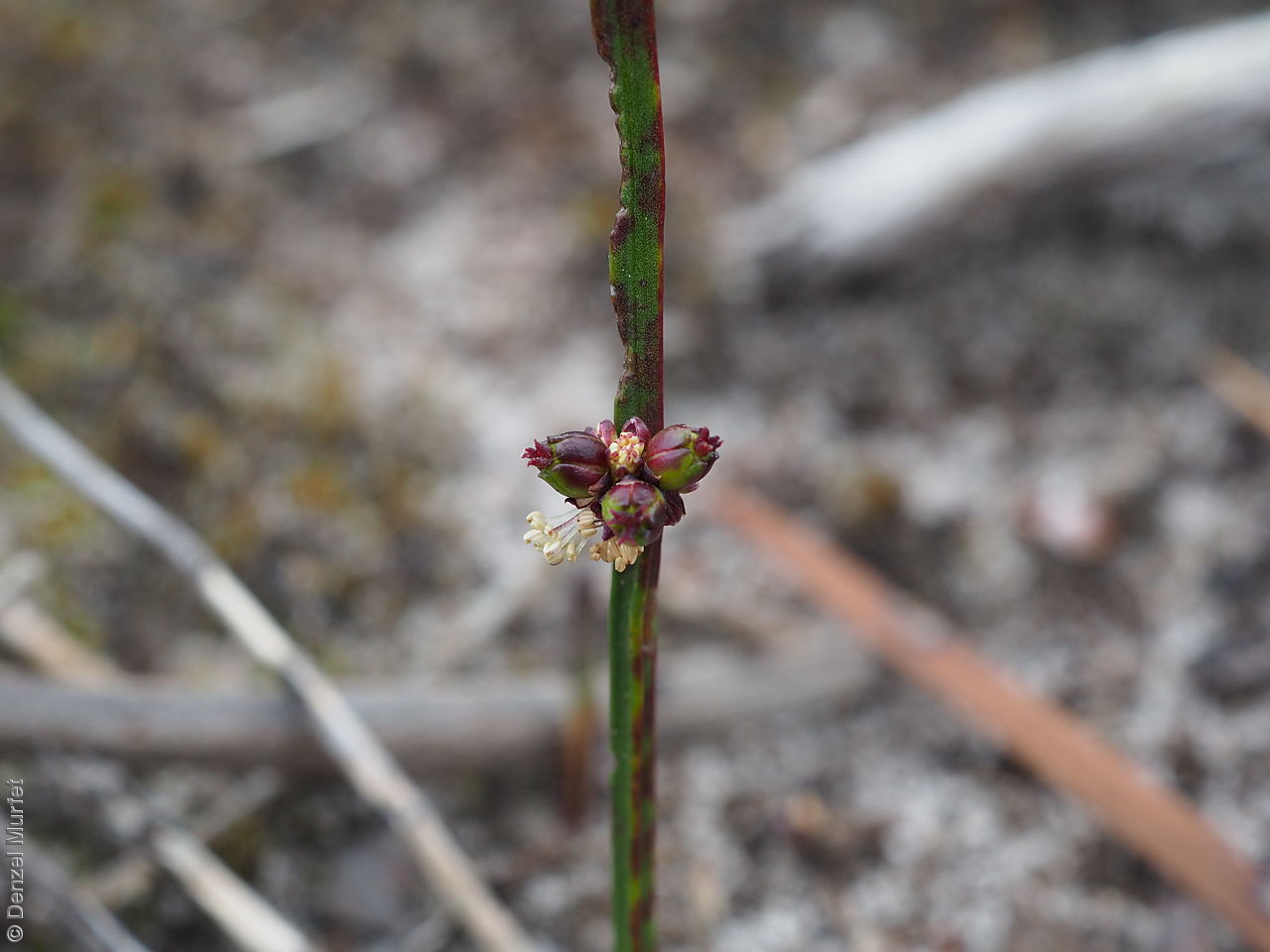
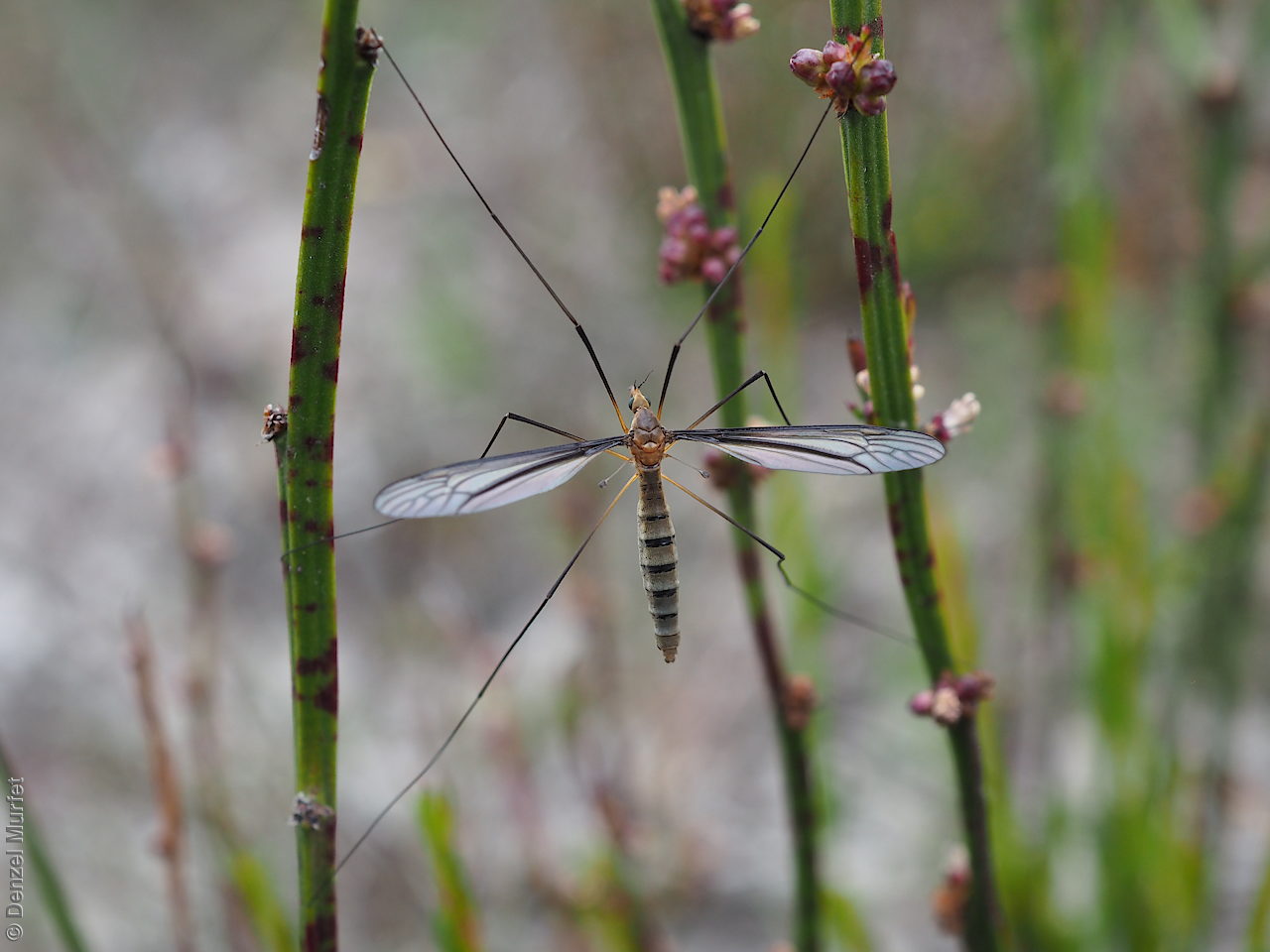


Botanical art
Prior names
Leptomeria xiphoclada
Amperea spartioides
Etymology
Amperea In honour of Jean-Jacques-Antoine Ampère (1800 - 1864), French historian, writer and philologist. xiphoclada from the Greek 'xiphos' meaning sword and 'klados' meaning branch.
Distribution and status
Found mainly in the lower South-east in South Australia with a single collection in the southern Mount Lofty Ranges from Woodside, growing in heathlands, woodland and open forest on moist sandy soils. Also found in Queensland, New South Wales and Tasmania. Native. Common in South Australia. Common in the other states.
Herbarium regions: Southern Lofty, South Eastern
NRM regions: Adelaide and Mount Lofty Ranges, South East
AVH map: SA distribution map (external link)
Plant description
Monoecious or almost dioecious, erect subshrub to 60 cm tall with a hard, woody base and rigid, angular branches, almost leafless when flowering. Lower leaves on the stem cuneate-oblong to 15mm long, margins often toothed; upper leaves linear-lanceolate, entire, scale-like, usually less than 10 mm long. Flowers are few in small sessile clusters in the axils of small distant scales, brown-red in colour. Flowering spasmodic throughout the year but mainly between October and November. Fruits are ovoid capsule to 4 mm long. Seeds are shiny, black and ovoid to 2.5 mm long, with a wrinkled surface. Seed embryo type is spatulate.
Seed collection and propagation
Collect seeds between December and January. Collect whole stems bearing maturing capsules, those that are fat and turning pale green and contain hard seeds. Place the capsules in a tray and leave to dry for one to two weeks. Then rub the capsules by hand or with a rubber bung to dislodge the seeds. Use a sieve to separate the unwanted material. Store the seeds with a desiccant such as dried silica beads or dry rice, in an air tight container in a cool and dry place. Seeds are non-dormant, viable seed should germinate readily.